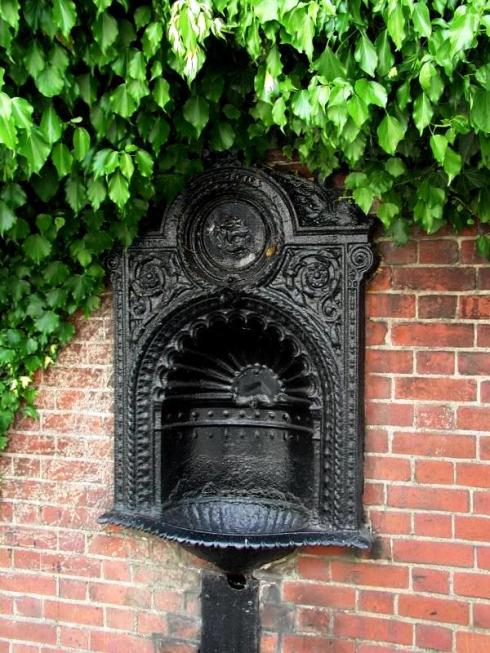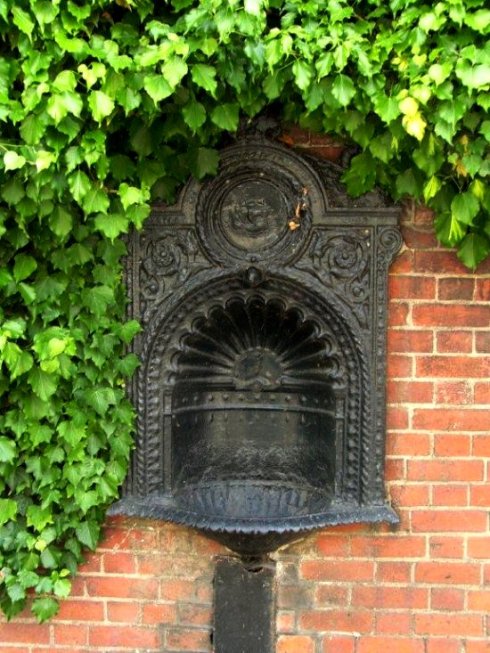Location: Belfast, Northern Ireland
In June 1866, a portion of the land purchased from the Sinclair family by Belfast Corporation was used to create Falls Park. It was established as a public park in 1869. The park was used as a congregational area during WWII air raids.
Unfortunately I have been unable to find any information relating to the history of the drinking fountain erected in the park. The attached photos were taken by John Bonar Holmes on July 25, 1946. Used with permission from the Facebook page, Yesterday’s Photos and Photographic Services.
The 6’ 2” drinking fountain, design number 18, was manufactured by Walter Macfarlane’s Saracen Foundry in Glasgow, Scotland. It had a wide base in the form of a St. Andrew’s cross with canted corners, on which was set a circular shaft ornamented with water lilies. Four lion jambs supported four highly decorated quatrefoil basins. An obelisk with swan and bird relief rose from the center of the basins. A kylix-shaped vase terminal with four consoles offered drinking cups suspended by chains.
Symbolism was popular in Victorian times. Griffins are symbolic of guardians of priceless possessions; lions are symbolic of guardianship; owls are symbolic of guardians of the afterlife, and eagles represent immortality.
Glossary
- Console, a decorative bracket support element
- Jamb, a projecting vertical post containing sculpture
- Kylix, a Grecian style drinking cup
- Plinth, flat base usually projecting, upon which a pedestal, wall or column rests
- Quatrefoil, a type of decorative framework consisting of a symmetrical shape which forms the overall outline of four partially-overlapping circles of the same diameter
- relief
- Stanchion, upright bar or post providing support
- Terminal, statue or ornament that stands on a pedestal






















